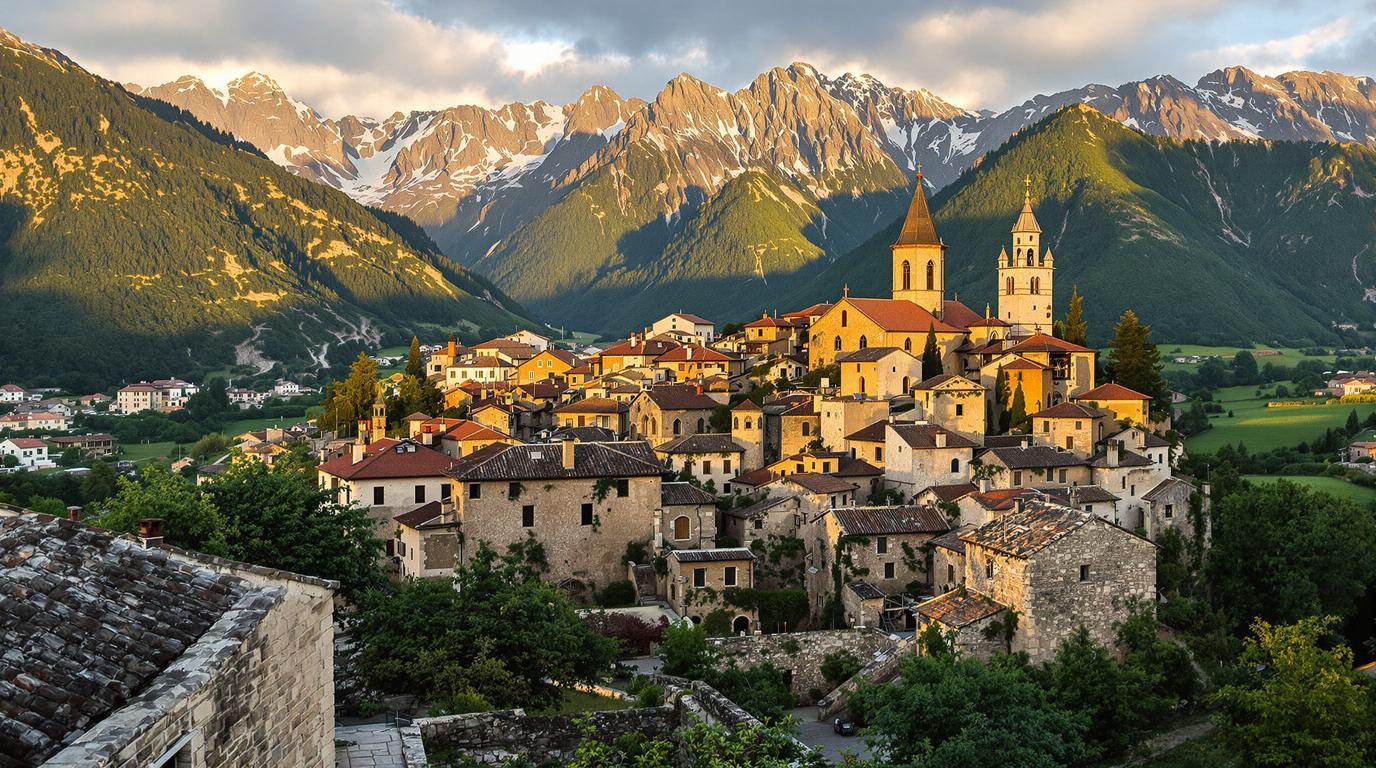France’s best-kept secret might be hiding in plain sight. Trévillach, a tiny commune perched in the Pyrénées-Orientales region just 30 kilometers from Perpignan, embodies the soul of rural French living while offering adventurous travelers a genuine escape into Catalan culture. With fewer than 150 residents, this mountain village delivers an authentic experience that feels worlds away from the crowded tourist haunts of Provence and the Riviera.
Where two cultures merge in mountain sunshine
The Pyrénées-Orientales department occupies a unique position in France’s cultural landscape. Here, French and Catalan traditions blend seamlessly, creating a distinct regional identity. In Trévillach and surrounding villages, approximately one-third of locals speak Catalan or Occitan alongside French, giving visitors the feeling of discovering a cultural crossroads rather than just another French village.
Like other hidden mountain paradises in Europe, Trévillach enjoys exceptional weather patterns. The region basks in abundant Mediterranean sunshine throughout the year, creating perfect conditions for outdoor exploration regardless of season.
A landscape photographer’s dream canvas
Trévillach’s setting is dramatically beautiful. The village sits amid rolling green mountains with the majestic Pyrenees creating a stunning backdrop. Unlike the perfectly manicured landscapes of more touristy regions, there’s a wild, untamed quality to the scenery here that feels refreshingly authentic.
“What makes our village special is how the light changes throughout the day,” explains Marie Dubois, a local artist who moved to Trévillach fifteen years ago. “In the morning, the mountains glow golden, and by evening, they turn purple and blue. It’s why so many painters and photographers find inspiration here.”
Medieval heritage frozen in time
While not as extensively preserved as some of France’s famous bastide towns, Trévillach maintains its own medieval charm. Stone buildings with terracotta roofs line narrow winding streets, creating a timeless atmosphere that transports visitors centuries back. The village’s architectural elements reflect traditional Catalan influences, distinct from what you’d find in northern France.
Hiker’s paradise without the crowds
The surrounding area offers exceptional hiking opportunities with well-marked trails revealing spectacular mountain panoramas. Unlike overcrowded tourist destinations, these paths remain peaceful even during high season, allowing visitors to connect intimately with nature.
Cyclists will find the region equally rewarding. The Mediterranean bike route (EuroVelo 8) passes through the area, attracting both serious road cyclists and casual riders seeking scenic routes through pristine countryside.
Catalan flavors that dance on your palate
Trévillach’s culinary scene reflects its cross-cultural heritage. Local dishes incorporate Mediterranean ingredients with distinct Catalan preparations. Paella variations feature prominently alongside meals rich in local scallions, creating flavor profiles unique to this region.
“Our cuisine tells our history,” says Jean-Paul Mercier, owner of a small restaurant in the area. “We use French techniques with Spanish ingredients and Catalan spices. It’s impossible to categorize, but impossible to forget once you’ve tasted it.”
Cultural immersion beyond tourism
Unlike some Mediterranean destinations that balance tourism with authenticity, Trévillach remains largely untouched by commercial tourism development. Visitors experience genuine village life rather than a curated version designed for travelers.
Throughout the year, local festivals celebrate regional arts, traditional Catalan dances like the sardana, and seasonal harvests. These events provide windows into cultural practices that have remained largely unchanged for generations.
Beyond Trévillach: regional exploration
The village makes an excellent base for exploring broader Pyrénées-Orientales attractions. Historic Perpignan with its Palace of the Kings of Majorca lies just 30 kilometers away. The Mediterranean coast with its beautiful secluded bays can be reached within an hour’s drive.
Winter visitors can access nearby ski resorts like Bolquère-Pyrénées 2000, enjoying morning mountain sports and afternoon village relaxation.
Where ancient meets artistic
While not featuring street art like some heritage destinations in Asia, Trévillach preserves its cultural expression through traditional crafts. Local artisans maintain workshops producing ceramics, textiles, and wooden crafts using techniques passed down through generations.
Trévillach exists in that rare sweet spot—accessible enough for comfortable travel yet removed enough to retain its authentic character. For travelers seeking to experience the true essence of rural French-Catalan culture while exploring stunning mountain landscapes, this hidden village offers something increasingly rare in our hyperconnected world: a genuine encounter with a place that remains true to itself.
